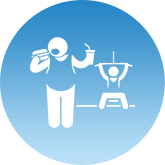Understanding Gout
Gout is a type of arthritis caused by high levels of uric acid, resulting in the accumulation of urate crystals in the joint. Characterized by sudden intense pain, swelling, tenderness, warmth, redness and stiffness of the joint, this condition can attack anyone. It typically develops at the joint at the base of the big toe, though the joints in the wrists, elbows, fingers, ankles and knees can be affected as well.
Gout is a very common illness recorded throughout history. It often points to the inability of the body to process uric acid. An abnormality in handling uric acid not only triggers gout attacks but also other medical conditions such as permanent joint damage and kidney complications.
It is most common in men, though women are found to be more likely to develop the disorder after menopause.






